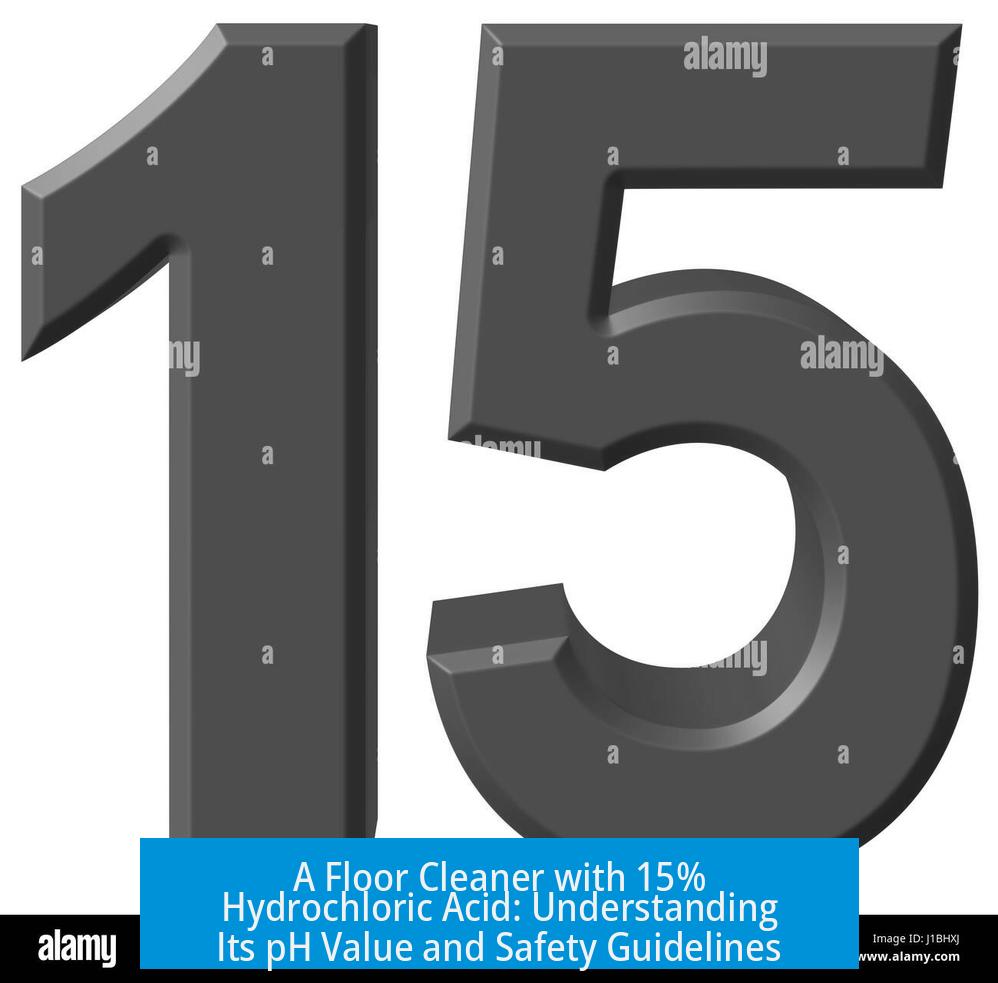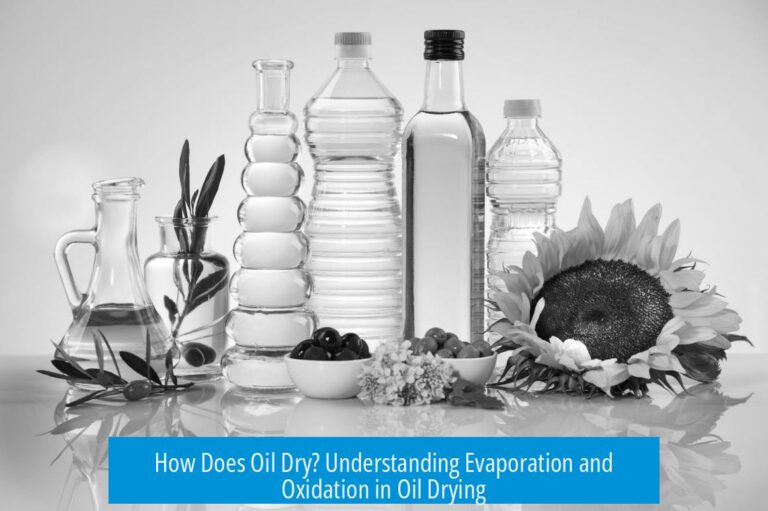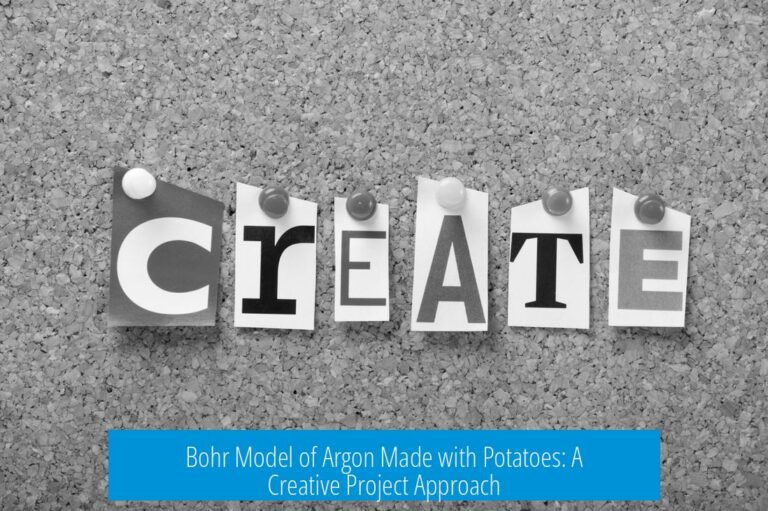A Floor Cleaner Has 15% Hydrochloric Acid, What is the pH Value?
The pH value of a floor cleaner containing 15% hydrochloric acid (HCl) is approximately -0.6, which indicates an extremely acidic solution. This negative pH results from the high concentration of HCl, surpassing the conventional 0 to 14 pH scale. However, the actual pH can vary depending on other chemicals present in the cleaner, which may buffer or alter the acidity.
Understanding pH and Hydrochloric Acid Concentration
The pH scale measures the acidity or basicity of an aqueous solution. Typically, pH values range from 0 (extremely acidic) to 14 (extremely basic). This scale is based on the activity of hydrogen ions (H+) present in the solution. However, in very concentrated acids, the pH can fall below zero due to the high concentration of free protons.
Hydrochloric acid is a strong acid and dissociates completely in water:
HCl → H+ + Cl−
The pH depends directly on the molarity of HCl. For typical household or diluted acids, the pH remains within the 0-14 range. But at strong concentrations, such as 15% by weight, the pH drops below zero. This explains why 15% HCl solutions can have a pH near -0.6.
Calculating Concentration and pH of 15% HCl
A 15% w/w HCl solution means 15 grams of HCl in every 100 grams of solution. Since the solution is mostly water, this roughly translates to 15 g HCl per ~85 g water, assuming density close to water for approximation.
Molar mass of HCl is approximately 36.46 g/mol, so:
- Moles of HCl = 15 g ÷ 36.46 g/mol ≈ 0.41 mol
- Volume of solution ≈ 100 mL = 0.1 L (approximation)
- Molarity (M) ≈ 0.41 mol ÷ 0.1 L = 4.1 M
Given the strong acid dissociation, the hydrogen ion concentration [H+] ≈ 4.1 M. The pH is calculated as:
pH = -log [H+] = -log (4.1) ≈ -0.61
This negative pH reflects the solution’s very high acidity. The pH scale is logarithmic, so each unit change represents a ten-fold change in proton concentration.
Impact of Other Ingredients on pH
The floor cleaner formulation often contains additives besides hydrochloric acid. These compounds can affect the overall pH.
For example, if the cleaner contains buffering agents such as sodium acetate, the pH will shift higher. Such buffers moderate changes in acidity by reacting with free H+ ions.
In these cases, even with 15% HCl, the pH might not be as low as calculated for pure HCl solution. It could rise closer to 3, depending on the amount and strength of the buffering agents.
Thus, the nominal acid concentration alone does not fully determine the pH value. The presence of bases or buffers in the cleaner modifies the final acidity.
Practical Methods for Estimating pH
Estimating the pH of concentrated solutions experimentally can be challenging. One reliable method is to use calibrated pH meters designed for strong acids. Alternatively, online pH calculators provide useful estimations based on known concentrations.
An example online tool is found at https://sensorex.com/ph-calculator/, which allows users to input concentration data and receive estimated pH values.
These calculators help predict how changing formulation affects acidity. However, laboratory measurements remain the gold standard for precise pH values, especially with complex mixtures.
Safety Considerations of 15% HCl in Floor Cleaners
Hydrochloric acid at 15% concentration is highly corrosive. It can cause severe burns to skin and eyes on contact. Floor cleaners with this concentration demand careful handling.
Standard safety precautions include wearing safety goggles, gloves, and protective clothing during use. Proper ventilation and avoidance of prolonged exposure are crucial.
Although industrial-grade concentrated HCl can reach up to 37%, a 15% concentration is still considered strong for household use. It is generally used for heavy-duty cleaning tasks, such as removing mineral deposits or etching stone.
Tissue damage severity depends not only on pH but also on exposure duration and the presence of other irritants in the formula, such as detergents or surfactants. These additional chemicals can exacerbate irritation or chemical burns.
Immediate rinsing after exposure minimizes injury. Delayed symptoms may indicate less severe effects, but medical advice is essential if contact occurs, especially involving eyes.
Summary of pH Characteristics and Safety
| Property | Detail |
|---|---|
| Hydrochloric Acid Concentration | 15% w/w (~4.1 M) |
| Estimated pH | Approximately -0.6 for pure solution |
| Effect of Additives | Buffers like sodium acetate can raise pH to ~3 |
| Usual pH Scale | Can be exceeded in strong acid solutions |
| Safety Risks | Corrosive, causes burns; requires protective equipment |
Key Takeaways
- 15% hydrochloric acid corresponds to about 4.1 M concentration.
- The theoretical pH of this solution is approximately -0.6, indicating extreme acidity.
- Other substances in the cleaner can adjust pH, sometimes raising it into the acidic but positive range.
- The common pH scale of 0 to 14 does not limit the true pH values of very concentrated acids.
- Handling 15% HCl cleaners requires strong safety measures due to corrosiveness.
- Exposure effects depend on duration, concentration, and additive chemicals.
- Use reliable pH measurement tools or calculators for accurate readings in mixtures.





Leave a Comment